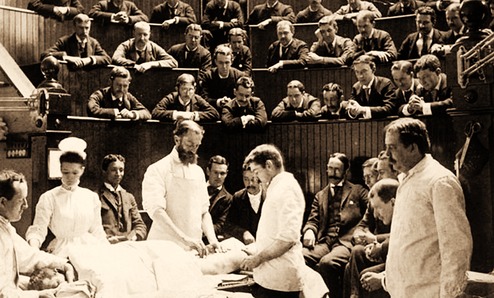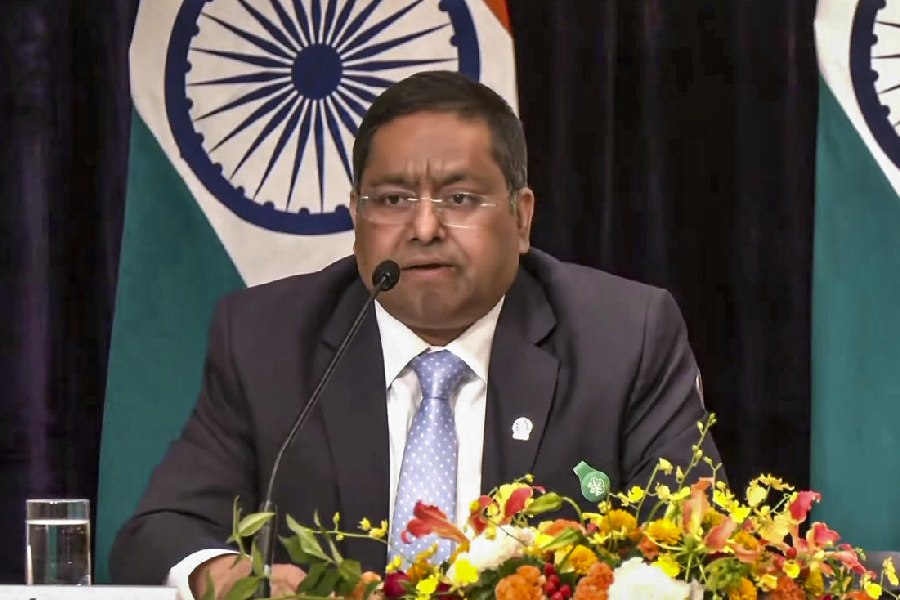
Surgery was not what it is before anaesthesia. It was a mad scramble to perform the procedure in the shortest possible time. One of the leading surgeons of London in the first half of the 19th century, Robert Liston, could do amputations in 28 seconds flat, or so his admiring contemporaries recorded. Several methods were used to induce some measure of painlessness during surgery. The most common was sedation - using a mixture of opiates - and the most unusual was mesmerism. While all methods failed regularly, a man in Calcutta had remarkable success in using mesmerism during surgery.
James Esdaile had graduated in Medicine from the University of Edinburgh in 1829. Like many of his contemporaries, he joined the services of the East India Company and arrived in Calcutta in 1831. After spending some time in what is now Uttar Pradesh, he was appointed to The Hooghly Imambara Hospital. It was there that Esdaile began using mesmerism.
We have an account of the first time Esdaile used mesmerism to relieve pain. Reads the Esdaile's entry as published in his book, The Introduction of Mesmerism in the Public Hospitals of India: "On 4th April, 1845, a Hindoo of the lowest caste was brought to the hospital with a double hydrocele. The water was drawn off one side of the scrotum, and two drachms of the usual corrosive sublimate injected. On feeling the pain, the man threw his head over the back of the chair, and pressed his hands firmly upon his groins, making the grimaces of a person in pain. It occurred to me to attempt to mesmerise him; and turning to my native assistant, I asked him if he had ever seen a person mesmerised? He said that he had seen it attempted in the Medical College, Calcutta, but without success. 'I have a great mind to try it on this man,' I said; 'but as I never saw it done, I shall probably not succeed.'
"Without a word said to the man (his eyes being still closed), I began to make passes from the crown of his head to the pit of his stomach, without touching him. I continued this for half an hour, and then gave it up in despair, seeing no sensible effect. While resting myself (the thermometer being 85°F), I desired the man to open his eyes, and he said that he saw smoke. This roused my attention, and tempted me to persevere, as I had heard of the mesmeric haze. He shortly removed his hands from the groins, crossed his arms on his breast, and all signs of uneasiness disappeared. In half an hour more he took no notice of my questions, and remained perfectly passive while I drove a pin into the small of his back."
Esdaile continued to use mesmerism and, in a published work, claimed not only to have successfully used it as a form of anaesthesia but also in other conditions, including convulsions, spasmodic colic and nervous headache.

Mesmerism gets its name from German physician, Franz Anton Mesmer, who postulated in his doctoral thesis that the planets affected human health and all humans had a universal fluid, which could be manipulated to cure the sick. His method of manipulation was to wave a magnetised pole over a person though the man he had picked up this trick from - Jesuit healer Father Hell - preferred a magnetic steel plate. Mesmer proposed that the magnetic field unblocked his earlier hypothesised subtle magnetic fluid.
Esdaile's first case was reported in the April issue of the Calcutta Medical Journal but was received with skepticism by teachers at the Medical College, Calcutta, except for Dr Webb, a professor of Anatomy, who attended a surgical list [a series of operations open to viewers] performed by Esdaile. On June 4, 1846, the Scottish doctor had operated on a series of patients, including those who had ampu-tations and those who had had cancerous growths removed. He had apparently taught some assistants the method of mesmerism and the patients slept peacefully throughout the surgery. It is difficult to believe this story today but it has been corroborated by a large number of independent reports; there were so many spectators that day that it was difficult for a carriage to gain entrance into the hospital premises. Notwithstanding the heat of the day, people came from Calcutta as well as nearby places to watch the miracle.
The most interesting part of the story is that the people who actually put the patients into a mesmeric trance were Indians. Unfortunately, Esdaile never mentions the name of his assistants even though he kept meticulous records of the names and diagnoses of his patients.
In 1847, a committee was set up by the then deputy governor, Sir Herbert Maddock, to investigate Esdaile's "controversial" work. This committee examined the procedure in 10 patients who underwent surgery after mesmerism. The procedure failed in two but worked well in the rest, so the committee was forced to admit its merits. Esdaile was appointed a Presidency Surgeon in Calcutta and the Experimental Mesmeric Hospital, funded by public subscription, was set up for him to work in. This hospital was shut down after 18 months when Esdaile was made superin-tendent in one of the government hospitals. The medical establishments in both England and India, however, remained strongly inimical to his work.
Meanwhile, on October 16, 1859, Boston dentist William Morton successfully used ether to anaesthetise a patient with a neck tumour. Soon after, chloroform was also successfully used as anaesthesia. This caused attention to shift from mesmerism. These methods were more reliable, faster and cheaper.
Esdaile returned to England in 1851. He died, an embittered man, in 1859 at the age of 51.
The writer is a doctor who teaches at the Taylor’s University School of Medicine in Selangor










